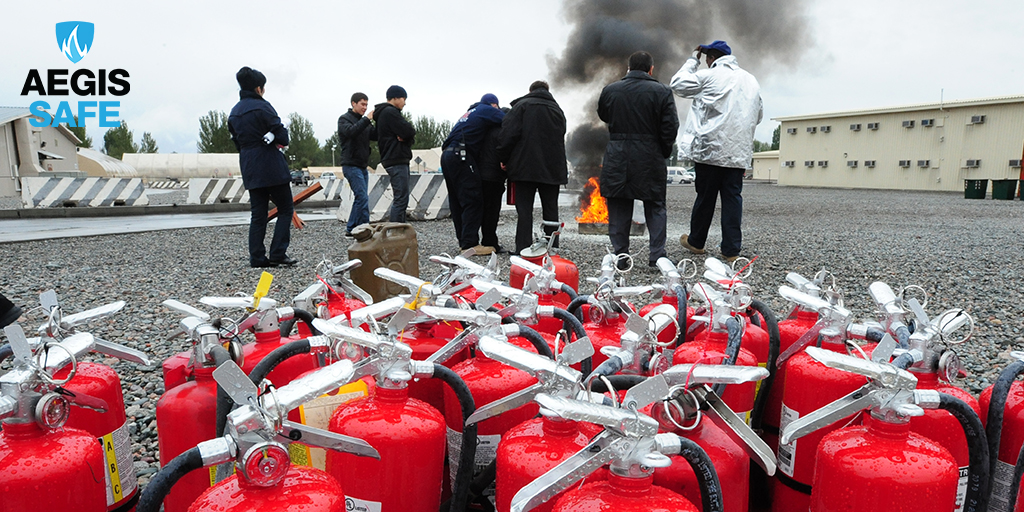Cart
Fire Extinguisher Testing & Inspection Services
Fire extinguisher testing is one of the quickest and simplest ways of safeguarding you and your business when there is a fire incident.
Around 90% of fire incidents can be resolved by using a portable fire extinguisher. A countless number of lives and properties have been saved due to diligent maintenance and testing of extinguishers.
Our professional service technicians are skilled and well equipped to carry out your fire extinguisher testing and offer you valuable information about them.
Benefits Of Using Aegis Safe To Service Your Fire Equipment
Request a FREE QUOTE
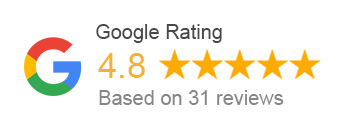

Fire extinguisher testing service prices
Fire extinguisher testing services from only $120 per service.
Contact us today to book in your service.
This includes:
- Call out to regular service areas in Brisbane, Gold Coast and Sunshine Coast.
- Testing report issued.
- Single property service.
- Up to 5 fire extinguishers, fire hose reels and fire blankets.
- Additional extinguishers $12 each.
- Testing to AS1851-2012.
- Fire extinguisher compliance check.
- Service reminders.
Extinguishers must be tested every 6 months.
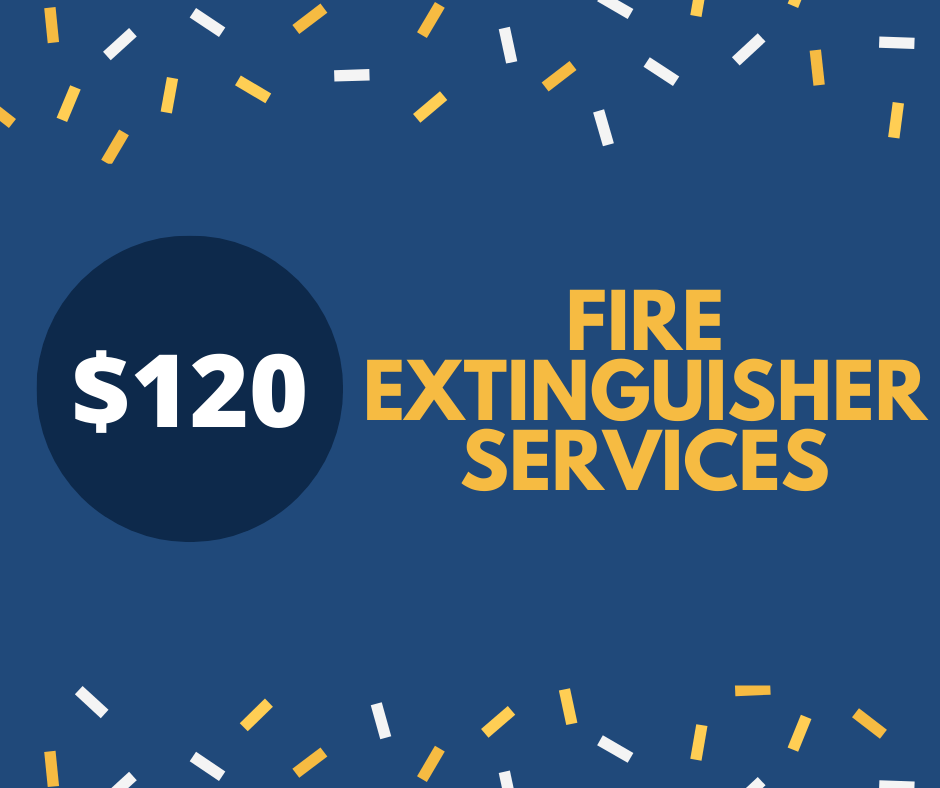
Fire Extinguisher Testing Near Me
Aegis Safe are your local fire extinguisher testers throughout South East Queensland. While our head office is at the Gold Coast, our fire extinguisher testers are throughout the south east region, so in many cases they are just around the corner from you. Our fire extinguisher service team cover the following regions:
Fire Extinguisher Installation
Our fire extinguisher installation team is led by a professional project manager that is experienced in a wide range of building and construction projects. Our extinguisher installers are skilled tradespeople with significant experience in fire protection equipment. Each fire technician takes pride in their work, ensuring minimum disruption to your operations while making sure that all extinguishers, signs, and maintenance tags are installed according to specifications.
Our Fire Extinguisher Installation Services Include:
- Fire extinguisher sales and installation
- Mounting of wall bracket and extinguisher
- Installation of signage
- Supply and stamping of maintenance tag
- Fire extinguisher installation certificate (Form 12, Form 16)
We will provide you with fire safety services to enhance the quality of your business. We carry out all fire extinguisher installations in line with the Australian Standards and Building Codes to ensure that you, your property and investments are safe.
Fire Extinguisher Safety Laws And Regulations
- All fire extinguisher testing work is to be carried out by competent persons. In Queensland this means someone holding a relevant QBCC licence.
- Summary records of the testing must be supplied to you with the results of the testing service following each service.
- The supporting summary record shall be completed and shall include a register of the equipment on the premises, a statement of the service performed and details of missing or defective items.
As a business owner that occupies a building in Australia, you are legally obligated to cover the safety requirements to protect of the occupants of the building in the event of a fire incident. Please contact us if you require more information about the law of fire and safety in Australia.
We specialise in carrying out all fire extinguisher testing Brisbane and Gold Coast in compliance with the Australian Standards (AS1851-2012) and the NCC to make sure that you, your staff and your properties remain safe.
Fire Extinguisher Testing Frequency?
- All fire extinguishers have to be inspected by a qualified person at six monthly intervals.
- Fire extinguishers need to be pressure tested and refilled every 5 years.
- The tests and inspections are to be recorded on the label or metal tag attached to the unit.
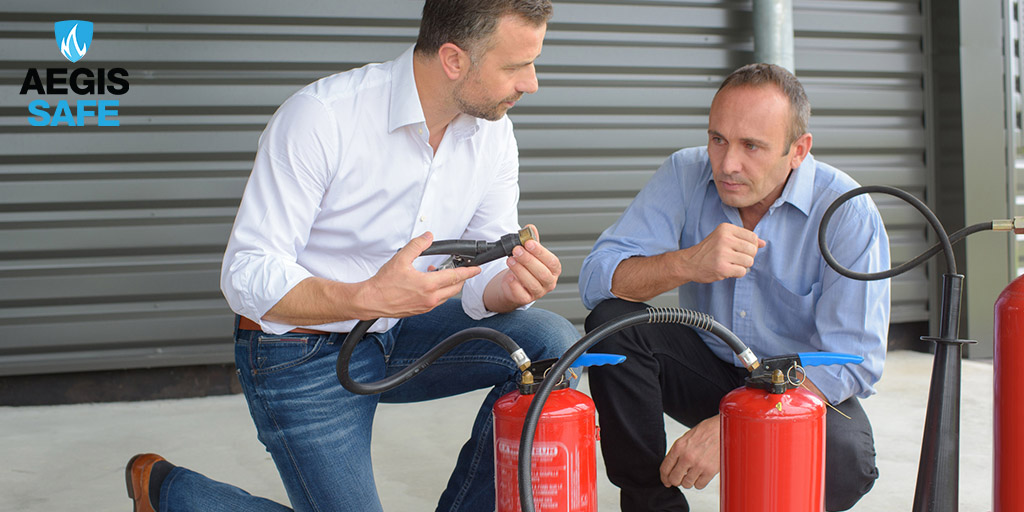
Can Your Workplace Environment Impact Fire Extinguisher Performance?
Fire extinguishers that are subjected to severe and harsh environments may need further maintenance, inspection and testing.
For instance, conditions where fire extinguishers are exposed to extreme temperatures, dust-filled areas, overexposure to sunlight, vibration from machines amongst others, can increase the failure rate of fire extinguishers.
Under these conditions, you want to ensure that your fire extinguishers are tested more often.
If you have questions about fire extinguisher testing, you should contact a trained professional to ensure that you understand all the rules and standards.
Have The Risks Changed?
The type of extinguishers that were initially installed in your workplace may no longer be appropriate if the type of fire hazard in your workplace has changed.
For instance, if you have more electrical appliances or switchboards newly installed, then additional Class E extinguisher may need be installed and maintained.
In the case that flammable liquids have recently been introduced I the workplace, then a Class B extinguisher should be installed accordingly.
It is crucial that you review and access your workplace risks from time to time and update the fire extinguishers in your facility in accordance with the fire risks present in your workplace.
Are All Of Your Extinguishers Mounted And Installed Correctly?
Periodic inspections of the cabinets, brackets or enclosures used for your fire extinguisher installation will guarantee that they remain correctly mounted. They should be mounted sturdily to the wall or support to properly secure them, whilst also enabling the tags and titles on them to be easily read.
Be careful to not place fire extinguishers in a location that is either difficult to reach or that poses a risk for anybody trying to reach it. Where feasible, fire extinguishers should be ideally placed in regular walk paths and near exits of the building.
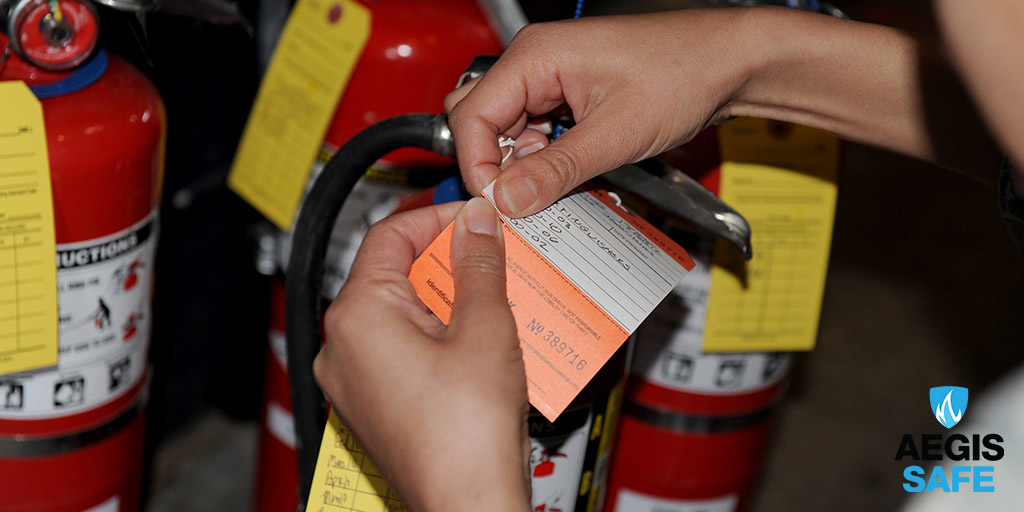
CONTACT OUR FIRE SERVICE TEAM TODAY!
Fire Extinguisher Testing, Inspections & Services
Does Your Fire Extinguisher Installation Meet Visibility Standards?
Fire extinguisher signage needs to be visible from a distance of up to 20 meters from where they are located in all directions.
Will Your Facility Need Additional Fire Extinguishers?
You should review the location and placing of your fire extinguishers and decide if you need more in the area. If there is an expansion to any area, you would need to re-evaluate the situation and check to see if the workplace area still complies with the Australian Standard 2444.
Fire Extinguisher Testing Standards
AS1851 2012 requires that your fire extinguishers be tested and tagged every 6 months. Fire extinguishers need to be refilled and pressure tested every 5 years. The standard also clarifies who can inspect fire extinguishers.
AS2444 requires fire extinguishers to be located approximately every 20m - 30m in your premises with appropriate signage.
We Carry Out Fire Extinguisher Testing For The Following Situations
- Fire extinguisher testing for home-based needs.
- Fire extinguisher testing for small businesses.
- Fire extinguisher tests for large businesses in large offices.
- Fire extinguishers tests for residential buildings and apartments.
- Fire extinguishers test for shopping centers and business parks.
- Testing fire extinguishers for schools and universities in Sydney.
- Testing fire extinguishers for factories, industries, storage complexes, etc.
Portable Fire Extinguisher Service Requirements AS1851
Australian Standard 1851 requires that:
- Fire extinguishers are be tested and tagged every six (6) months.
- Certain types of water and foam fire extinguishers need to be refilled every 12 months.
- All other fire extinguishers need to be refilled and pressure tested every 5 years.
Australian Standard AS2444 requires:
- Fire extinguishers to be located approximately every 20m in your premises and have appropriate signage.
Fire Extinguisher Servicing Guide For Consumers
Fire extinguishers that are installed in all commercial buildings, public buildings and certain multi-occupancy residential buildings need to be regularly inspected and tested by a competent person every six months.
The Australian Standard AS 1851 2012 Maintenance of Fire Protection Systems and Equipment specifies the fire extinguisher testing, maintenance and inspections that are required.
Examples of commercial buildings:
Offices, shopping centres, factories warehouses, restaurants, cafes, retail stores
Examples of public buildings:
Hospitals, schools, universities, libraries, theatres
Property owners, building managers, property managers, strata managers, tenants and the community in general should all be aware of some key points regarding the servicing of fire extinguishers to ensure they receive the appropriate level of service and are charged the correct amount for the services.
How To Use A Fire Extinguisher
The person looking to use a fire extinguisher should select the correct size and type of fire extinguisher most suitable for the relevant class of fire before undertaking the following:
- Ensure that the area is accessible and safe; the fire must not be too hot or too large, and that there are no other immediate hazards to safety.
- Contact the fire brigade.
- Select the correct fire extinguisher relevant for the class of fire.
- For using the fire extinguisher, the following acronym PASS - Pull, Aim, Squeeze, Sweep.
- Pull the pin of the fire extinguisher;
- Aim the extinguisher towards the base of the fire;
- Squeeze the handle;
- Sweep the extinguisher back and forth.
The fire may reignite even after it has been extinguished. Until the fire brigade arrives, secure another fire extinguisher if it’s safe enough and observe the scene of the fire.
Fire Extinguisher Tips
- The Australian Standard 2444 (AS 2444) Portable Fire Extinguishers and Fire Blankets Selection and Location will provide comprehensive information.
- Ensure everyone in the workplace or office knows the location of all extinguishers and how to use them.
- Extinguishers need to be pressure tested every five years by a registered organisation.
- Check that there are no blockages to the nozzle or outlet.
- If you have a dry chemical powder fire extinguisher (red with a white band or label). Turn the extinguisher upside down for a couple minutes every month to ensure that the powder is free flowing.
- Replace the extinguisher in case of rust or damage.
- If an extinguisher is discharged, even partially, it needs to be refilled by a registered organisation.
Types Of Fires - Which Fire Extinguisher To Use
Fires are classified as type A,B,C,D,E and F in our environment. Class A fires are burning solids like wood, paper etc. Class B fires are burning liquids like Petrol and Class E fires are Electrical fires. There are other fire types ("C" - Gas fires, "D" - metal fires, "F" - cooking fats). Extinguishers are marked with the classes of fire they can be used on. They also give an indication of how big a fire they can deal with, eg: 4A(E) says the extinguisher can deal with a small class "A" fire and is also suitable for electrical fires. The bigger the number the bigger the fire. You should know the ratings of all your extinguishers - in particular, you should know which ones have the "E" rating, since this is the most likely kind of fire in our building! For (hopefully) obvious reasons, water based extinguishers can not be used on electrical fires, or near powered equipment. Be sensible and cautious - even if you believe the burning computer is now unplugged - treat it as live.
Class A:
Solids such as paper, wood, plastic etc
Class B:
Flammable liquids such as petrol, oil etc
Class C:
Flammable gases such as propane, butane, methane etc
Class D:
Metals such as aluminium, magnesium, titanium etc
Class E:
Energized electrical equipment
Class F:
Cooking oils and fats etc
Fire safety is all about vigilance and preparation so our company provides different fire extinguishers to put out all 6 different classes of fires. Here is a list of some of our offerings the fires they put our most effectively.
Water Fire Extinguishers
Puts out most class A fires by discharging to water to dampen the burning fuel
Carbon Dioxide Extinguishers
Puts out class B fires by displacing oxygen in the air preventing a fire from burning. This type is especially good for class E electronic fires.
Foam Extinguishers
Effective on class B fires due to the versatile properties of foams. It can dampen the fuel source or smother it making it a must around mechanics and refineries and other areas dealing with flammable liquids
Dry Chemical Powder Extinguishers
Versatile due to the unique powder agent this type can take care of most Class A, B, C and E fires.
Effective types of fire extinguishers for electrical fires
Electrical fires have the added hazard of the potential for electrocution while extinguishing it. For this reason, our company offers a line of extinguisher models made specifically to fight electrical fires. These are the Carbon Dioxide fire extinguishers (CO2 fire extinguishers).
Portable fire extinguishers
By definition, a portable fire extinguisher is an equipment utilised for extinguishing a fire. A portable fire extinguisher is only effective against the size and type of fire it is rated for.
In firefighting terms, portable fire extinguishers are used as "first attack" equipment. They are utilised only in the early stages of fire, up to the stage after which the fire grows beyond the chosen fire extinguisher’s capacity.
With Australia there are 5 main types of fire extinguishers available: carbon dioxide, dry chemical powder, wet chemical, foam and water. The extinguisher must be selected keeping in mind the class of fire it will be utilised against.
In 1723, the first patent of a fire extinguisher was launched by English scientist Ambrose Godfrey. The following 300 years experienced literally hundreds of variations and iterations over the basic design of the fire extinguisher.
If you analyse all the variations, you will be left with five common components present in every variant of the extinguisher manufactured in history. These are:
- a directional nozzle
- a valve
- an expellant (or propellant)
- an extinguishing agent
- a storage vessel
Modern fire extinguishers have continued to retain these common components. However, the advent of new technology has clearly resulted in improvements in the performance (rating and capacity) of extinguishers.
Fire Chemistry
Combustion (fire) is defined as a sequence of exothermic chemical reactions between an oxidant and a fuel accompanied by the by-products of combustion, namely electromagnetic radiation (light), smoke and heat.
There are four elements contributing to create the perfect environment for the initiation of fire and for its continuation. The four elements are namely:
- Chemical Reaction (Oxidation)
- Oxidant
- Heat
- Fuel
The effective removal of any one of these essential elements will result in the fire being extinguished.
In simple terms, a fire extinguisher works by influencing, eliminating or the ongoing effect of one or more of these four elements.
Classification Of Fires
The classification of fires is done in accordance with the fuel type and if there is a presence of live electrical equipment. The classification is very important, as it has direct influence over the selection and usage of the correct extinguisher for the fire situation. The fire extinguisher that is most relevant for extinguishing the fire.
The 6 classes of fire are:
- Class A - Ordinary Combustibles (such as plastics, wood, paper, etc.)
- Class B – Combustible and flammable liquids
- Class C - Flammable gases
- Class D - Combustible metals
- Class E - Electrically energised equipment
- Class F – Fats and cooking oils
Types Of Fire Extinguishers
As stated earlier, fire extinguishers are broadly categorised into 5 main types:
- Carbon dioxide
- Dry chemical powder
- Wet chemical
- Foam
- Water
For a given classification of fire, the selection of a fire extinguisher is shown by the colour code present in the body of the extinguishers.
Colouring and labels are the primary distinguishing factor for portable fire extinguishers.
The standard colour for portable fire extinguishers was changed in 1997. The extinguishers available in the market from this date were required to be polished stainless steel and painted red. Due to this change being relatively recent, extinguishers still use both Pre-1997 and Post 1997 colour schemes.
There is no universally acceptable type of fire extinguisher for all classes of fire. During selection of the most suitable variant of fire extinguisher, or combination of relevant fire extinguishers, each option must be carefully considered.
Water Fire Extinguishers (W)
A water-based extinguisher is also known as a stored pressure air-water fire extinguisher. This is because it’s a fire extinguisher that is stored under pressure (normally by air) and filled with water. These extinguishers are most applicable for Class A fires.
A water extinguisher cools the fire, interrupting the exothermic reaction. When the valve operated by a hand-held trigger is depressed, a water extinguisher starts operating. The water, contained and stored under pressure within the container is subsequently expelled.
Dry Chemical Powder (DCP)
The 2 main-types of dry chemical powder fire extinguisher are;
- BE Type - Effective on Class B, E & F fires.
- ABE Type - Effective on Class, A, B, C & E fires.
Dry chemical powder interrupts the oxidation process, making them very effective in controlling fires. The dry chemical powder, stored under pressure in the cylinder gets expelled when the hand-held trigger is depressed.
Note: There are special powders available for extinguishing fires where Class D combustible metals are involved.
Foam - Air/Foam (AF)
Air-foam fire extinguishers are either utilised against a class A or B fires, either as an aspirated (expanded & mixed with air via a branch pipe) or in a non-aspirated form. It subsequently creates a blanket of foam above the fuel, preventing the oxygen supply.
Wet Chemical (WC)
Wet chemical fire extinguishers are mainly installed in commercial kitchens for dealing with Class F fires (where the fuel is fats or cooking oils).
A wet chemical extinguisher smothers the burning oil by forming a blanket of soapy foam over it. This subsequently cools down the oil below its ignition point.
The chemical is expelled in the form of a fine mist that does not splash the grease onto other surfaces. Also, a Wet Chemical extinguisher can be safely used against “A” class fires.
Carbon Dioxide (CO2)
Carbon dioxide fire extinguishers are mostly useful against fire involving electrically energised equipment. Specifically where this electrically non conductive, inert gas, is most suited due to the minimal amount of clean up available from the agent. Areas that have expensive electrical equipment are a good example.
Carbon dioxide extinguishers are equipped with liquid CO2, that is subsequently expelled as a gas. Due to its heaviness when compared to air, carbon dioxide blankets a fire. It prevents oxygen from reaching the fire, depriving the burning fuel of oxygen. Carbon dioxide extinguishers are also effective against fires of Class “B” and “C”.
Unlike other chemicals used in fire extinguishers, CO2 doesn't adversely affect the environment by leaving a harmful residue. It also poses very little threat to electronic equipment employed in computer rooms, laboratories, and other sensitive areas with electrical equipment.
How Does A Fire Extinguisher Work?
Fire extinguishers expel an extinguishing agent when extinguishing a fire. The extinguishing agent is stored under pressure within a metal cylinder. When the hand-held trigger is depressed, the relevant valve opens releasing the agent.
Some fire extinguishers are equipped with a pressure gauge that offers a visual indication of its pressurised state. These gauges are colour coded, where green indicates whether the extinguisher is pressurised and ready for usage. It may also illustrate a numerical value indicating the same situation stated above.
Extinguisher Rating
The Australian Standard AS 1850 states that fire extinguishers must be marked with a rating and classification to comply with Australian Standards. The ratings of the extinguishers are calculated on the basis of their suitability and performance against a specific class of fire. A typical dry chemical extinguisher is marked 2A:40B: E, whereas a water extinguisher is marked 2A.
The number portrayed before the letter offers a measure of the relative performance within the relevant class as shown below:
• For Class A - Between 0 and 10
• For Class B - Between 2 and 80
• For Class F - Between 1 and 4
A higher number indicates that the extinguisher is more effective for that relevant class of fire. A fire extinguisher rated for several classes of fires are expressed in alphabetical order, i.e. 2A:40B: E.
There is a common misconception prevalent that 2 different fire extinguishers equipped with equal volume (Litres) or mass (Kg) must have the same rating. Every fire extinguisher is subjected to an array of standardised tests that ultimately determines their rating and suitability. These tests are conducted under the jurisdiction of the relevant local authority and in accordance with the building Code of Australia. It is mandatory to prominently display the final ratings on the sides of the relevant extinguisher.


